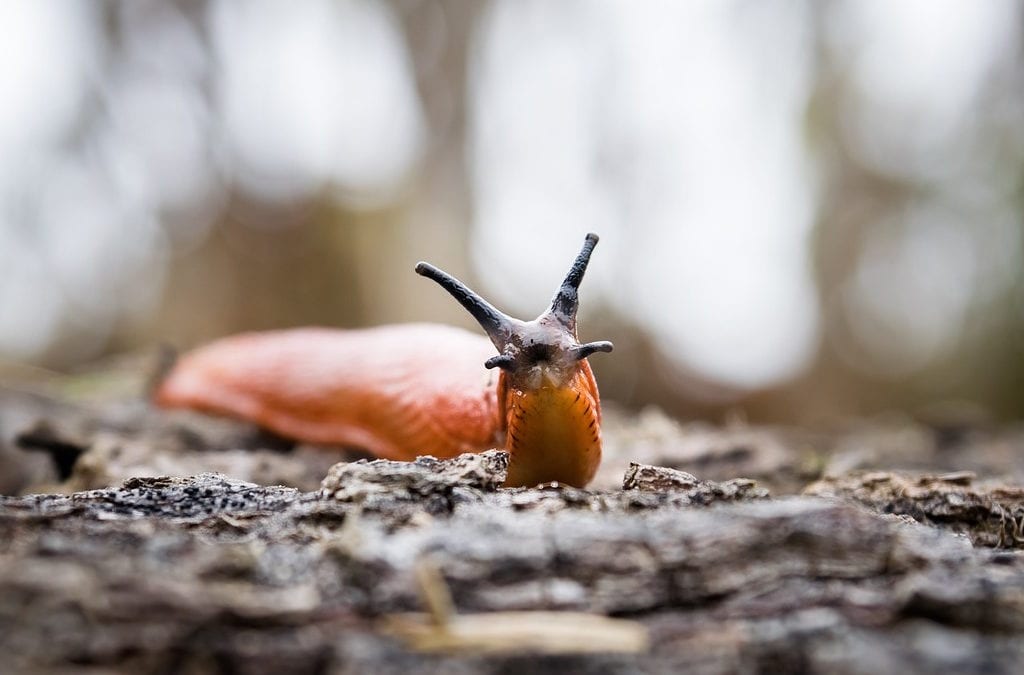You’ll most likely encounter pests at some point during your gardening endeavors in Texas. We share our worlds with these living creatures, and like all living creatures pests have needs to eat and find shelter, and they do so in our gardens if they can. However, you can take preventative measures to make your landscapes less enticing to pests and we will share a few of them today in this blog.
5 Natural ways to Prevent Garden Pests

Pests love to hide in weeds and then come out and eat your garden plants.

Pests look right past Dwarf Mexican Petunias. They are on the Texas SuperStar® list too!
1. Remove weeds. Having a lot of weeds and debris around your garden areas offers pests the ideal hiding places to lie in wait. (Slugs and snails love to hide there.) Pests may also feed on weeds first and then bring viral or bacterial disease to your gardens when they feed on your plants second. Be diligent about pulling and raking weeds when they are small as they are easier to manage then. (Remember, weeds also compete with plants for nutrients, and plants that are weaker are more susceptible to pests preying on them.) Corn gluten is an organic weed pre-emergent that helps prevent weed seeds from germinating.
2. Choose plants that are resistant to pests. There are many beautiful plants out there that pests just aren’t very interested in. Adding more of these choices to your landscape naturally will cut down on the amount of pests feeding on your plants. Check out the Texas SuperStar® website for plants that have been tested and made the cut for plants that have proven to do well in our Texas climate and often have resistance to pests and disease.
3. Mulch. Mulching your gardens is helpful to your garden in so many ways; but specific to insects, it can create a barrier between the plants and the soil where many pests can hide. This barrier pulls double duty and also attracts beneficial insects by providing a shelter for them. Mulch also helps suppress those weeds that were mentioned above in tip #1.
4. Place your plants in the correct location. If you plant a shade-loving specimen in an area with too much sun, your plant will be stressed. If you plant a water-thirsty plant in an area that doesn’t get much water, the plant will also be stressed out. Any time we try to force a plant to live in a location that is not natural to its growing needs will breed multiple problems. Stressed plants are more susceptible to pests and disease issues. Make sure you research the plants you desire to bring into your landscape and make sure that you have the proper growing conditions to support them.
5. Plant multiple varieties and species of plants. By mixing in a variety of plants, you have a smaller chance of pests mowing through your complete garden. Try a mix of herbs, flowers (that attract beneficial insects to do your pest control for you), and vegetables throughout your landscapes. If a pest finds one plant irresistible and moves on to the next, it’ll be met with a different taste that, hopefully, won’t be as enticing. Basils are beautiful mixed into perennials and annual gardens, and if left to flower, will attract pollinators by the dozens. Come see all the varieties we carry at Rainbow Gardens.
Give your plants the healthiest environment and you’ll find that you will have more time to spend enjoying your gardens and there will be less time spent battling the pests that compete for your attention.
~The Happy Gardener


Trackbacks/Pingbacks